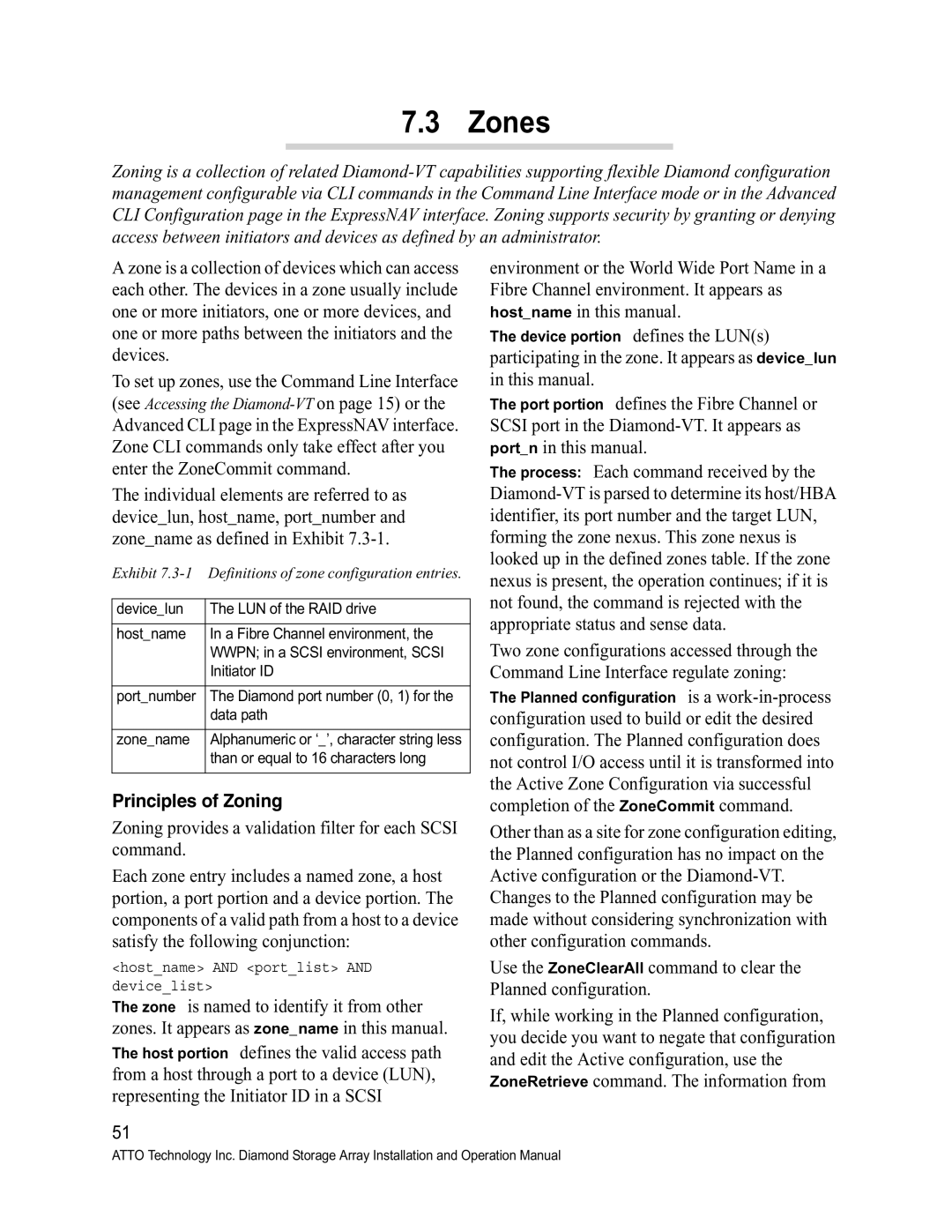7.3 Zones
Zoning is a collection of related
A zone is a collection of devices which can access each other. The devices in a zone usually include one or more initiators, one or more devices, and one or more paths between the initiators and the devices.
To set up zones, use the Command Line Interface (see Accessing the
The individual elements are referred to as device_lun, host_name, port_number and zone_name as defined in Exhibit
Exhibit
device_lun | The LUN of the RAID drive |
|
|
host_name | In a Fibre Channel environment, the |
| WWPN; in a SCSI environment, SCSI |
| Initiator ID |
|
|
port_number | The Diamond port number (0, 1) for the |
| data path |
|
|
zone_name | Alphanumeric or ‘_’, character string less |
| than or equal to 16 characters long |
|
|
Principles of Zoning
Zoning provides a validation filter for each SCSI command.
Each zone entry includes a named zone, a host portion, a port portion and a device portion. The components of a valid path from a host to a device satisfy the following conjunction:
<host_name> AND <port_list> AND device_list>
The zone is named to identify it from other zones. It appears as zone_name in this manual. The host portion defines the valid access path from a host through a port to a device (LUN), representing the Initiator ID in a SCSI
51
environment or the World Wide Port Name in a Fibre Channel environment. It appears as
in this manual.
The device portion defines the LUN(s)
participating in the zone. It appears as in this manual.
The port portion defines the Fibre Channel or SCSI port in the
The process: Each command received by the
Two zone configurations accessed through the Command Line Interface regulate zoning:
The Planned configuration is a work-in-process
configuration used to build or edit the desired configuration. The Planned configuration does not control I/O access until it is transformed into the Active Zone Configuration via successful completion of the ZoneCommit command.
Other than as a site for zone configuration editing, the Planned configuration has no impact on the Active configuration or the
Use the ZoneClearAll command to clear the Planned configuration.
If, while working in the Planned configuration, you decide you want to negate that configuration and edit the Active configuration, use the ZoneRetrieve command. The information from
ATTO Technology Inc. Diamond Storage Array Installation and Operation Manual
